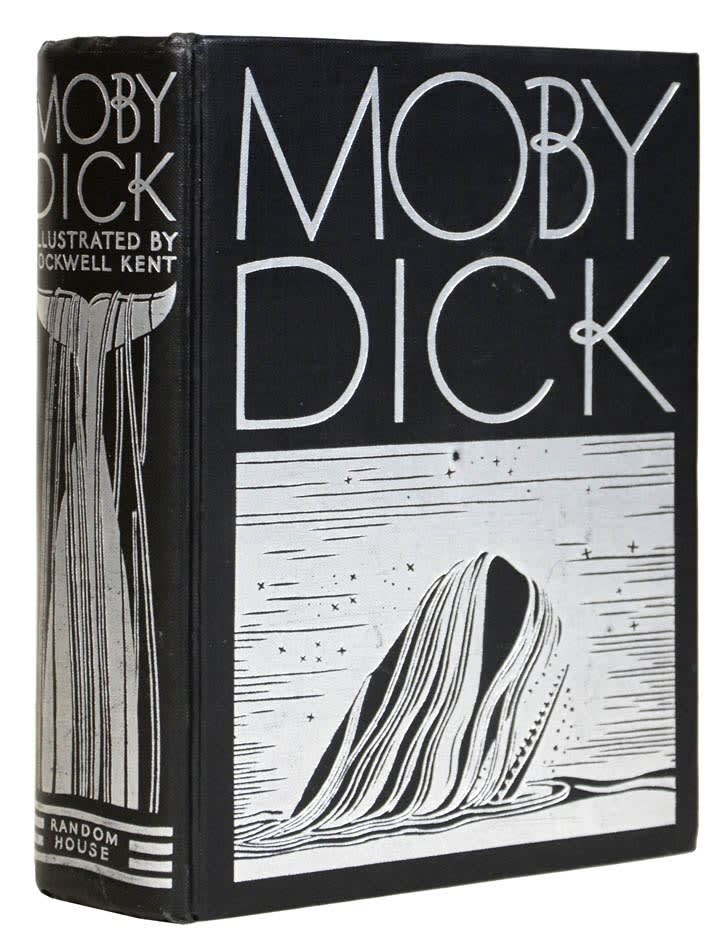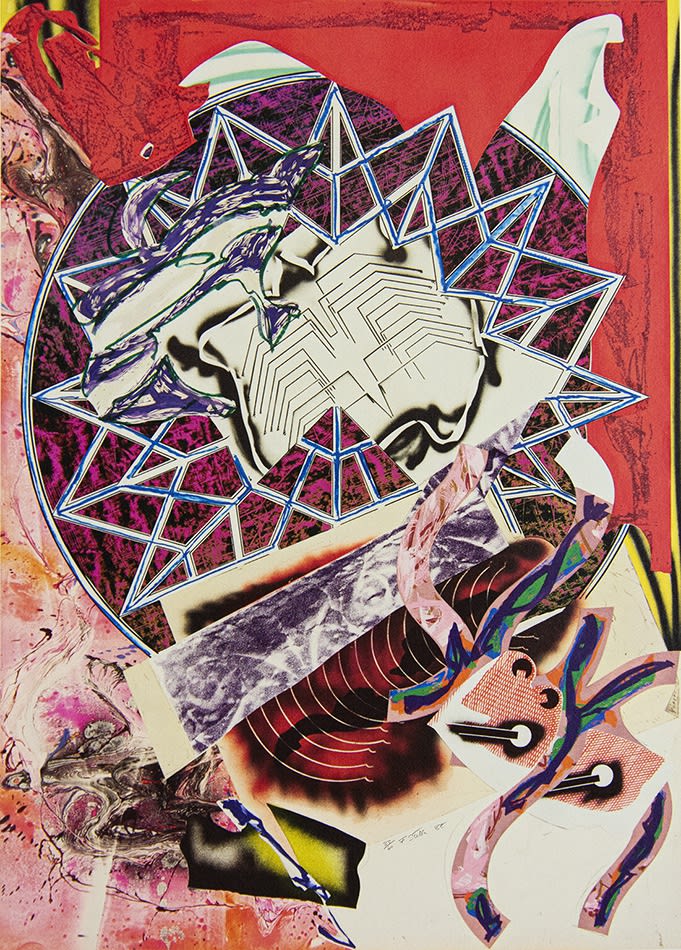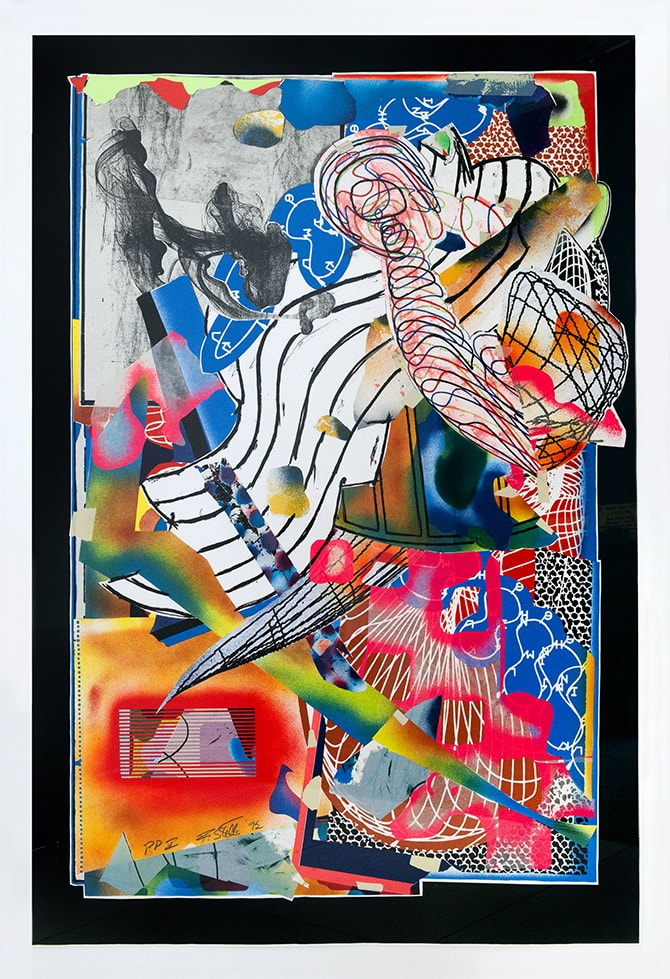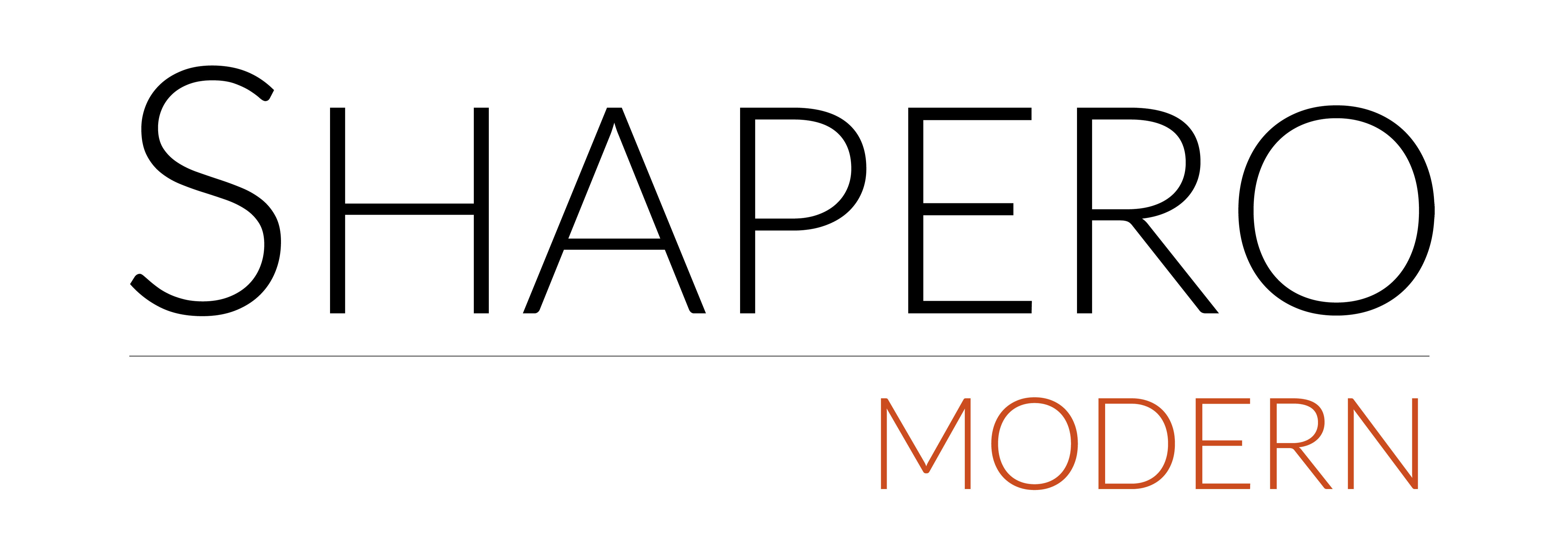‘…an around-the-world adventure story…’

As a gallery focusing on the original prints and works on paper of American 20th-century artists, it should come as no surprise that we adore the work of Frank Stella (b. 1936). In fact, so enamoured are we with the artist and the ground breaking, mould shattering advancements Stella has made in the medium of modern printmaking, that we devote a considerable part of our time exclusively to his work. Read on to learn more about one of the defining series of Stella’s career to date, ‘The Waves’, to which the artist devoted twelve years of his life between 1985 to 1997.

Frank Stella in his New York Studio, image taken by Douglas DuBois
The sheer variety of media that Stella employs so expertly in this series is astounding: screenprinting, lithography, collage, linocutting and most significantly hand-colouring. Over the many decades of his career, Frank Stella has made major contributions to modern printmaking, recasting it from a mode of reproduction to a major artistic medium in its own right. With ‘The Waves’ series, which consists of 13 artworks, each one printed as an edition of 60, Stella hand-coloured each print, leaving evidence of his presence within the creative process of every one of the artworks.


Moby Dick, as illustrated in a 1930 edition
It may surprise you to discover that the inspiration for this series came from Herman Melville's magnum opus ‘Moby-Dick’. Frank Stella commented that Melville’s work ‘was an around-the-world adventure story about struggling with larger-than-life forces’. Such a classic novel hardly seems the most likely inspiration for the art of one of the founders of American minimalism and post-painterly abstraction, however in the midst of each work the viewer can indeed find many whale and wave-like forms. The title of each work also alludes to the moment in the book that Stella is inspired by. Here we look at three such works from this defining series…

Frank STELLA
The Quarter Deck
Silkscreen, lithograph, linoleum block with hand-colouring, marbling and collage, 1989
‘The Quarter-Deck’ captures the moment where aboard his boat, ‘The Pequod’, Ahab pulls out a gold Spanish doubloon and announces that whichever crew member successfully spots Moby Dick first will be rewarded with it. He ultimately gains the support of his crew bar one, Starbuck, who argues that it is blasphemous to carry out Captain Ahab’s revenge. One of the lighter, less intense images of the series, Stella deploys pinks, purples, blues and yellows to visually communicate the calm before the storm (pun intended). The presence of a dark sharp mass is an ominous shape the viewer can’t ignore, symbolic of the growing desire for retribution that lies within Ahab inevitably leading to his own downfall.

Frank STELLA
The Squid
Silkscreen, lithograph, linoleum block with hand-colouring, marbling and collage, 1989
In ‘The Squid’, Stella narrates a mistaken sighting of Moby Dick. Ahab’s eagerness for revenge intensifies only to swiftly diminish when he realises that the white mass amidst the waves is in fact a giant squid. The phrase ‘seeing red’ is no understatement when it comes to Ahab’s rage, and Stella expertly conveys this moment of intense frustration in his artwork. This anger, represented by the red background permeates through Stella’s forceful, hard forms whilst the lattice structure keeps these fierce shapes from leaving the frame. At the top of this composition we see distinct squid-like forms appearing from the lattice with curving tentacles towards the bottom right.

Frank STELLA
The Candles
Screenprint, lithograph and collage in colours, 1992,
‘The Candles’ takes its name from chapter 119 of the book where ‘The Pequod’ is hit by a typhoon. Typically storms were viewed with superstition and many on board saw this turn of events as a sign that the ship would face a terrible misfortune. During the storm, the crew look up on deck to see that all three masts are alight like candles, this phenomenon is known as ‘St Elmo’s fire’. Whilst there is a scientific explanation for this event, it was perceived as a warning by the sailors of Ahab’s fate. Frank Stella represents this frenzied scene through an abundance of overlapping, interlocking shapes and motifs and the dramatic ‘St Elmo’s fire’ phenomenon is alluded to in his fiery reds and oranges.
Shapero Modern specialises in Modern & Contemporary prints, multiples and works on paper, with a particular focus on American 20th-century art all of which are available to buy from our website as well as our gallery on Maddox Street in Mayfair.
The gallery runs a programme of selling exhibitions from both primary and secondary market artists, with six exhibitions per year, including collaborations with contemporary living artists as well as masters of 20th-century post-war editions including Frank Stella, Andy Warhol, Roy Lichtenstein, David Hockney, Claes Oldenburg, Alex Katz, Pablo Picasso and Joan Miró.
Shapero Modern exhibits at major international Art Fairs worldwide, including TEFAF Maastricht, Frieze Masters, Masterpiece London, Art Miami, the IFPDA Fine Art Print Fair and the London Original Print Fair at Somerset House. Meantime, Tabitha and her team are on hand at Shapero Modern’s Mayfair gallery in the heart of London to advise on all aspects of the art market and collecting.


